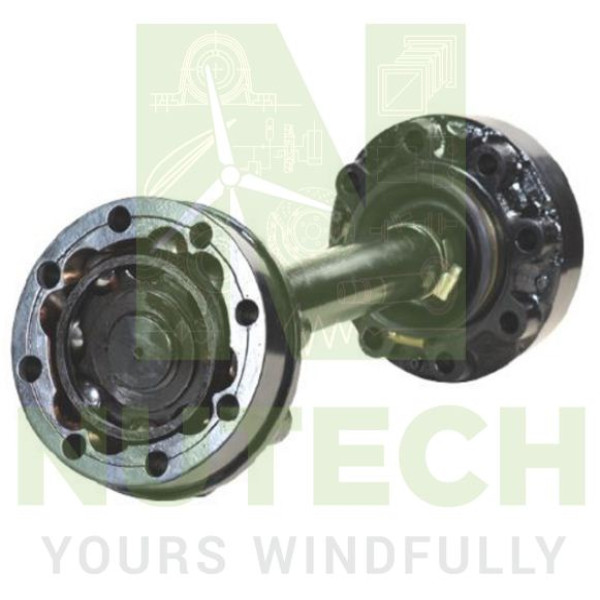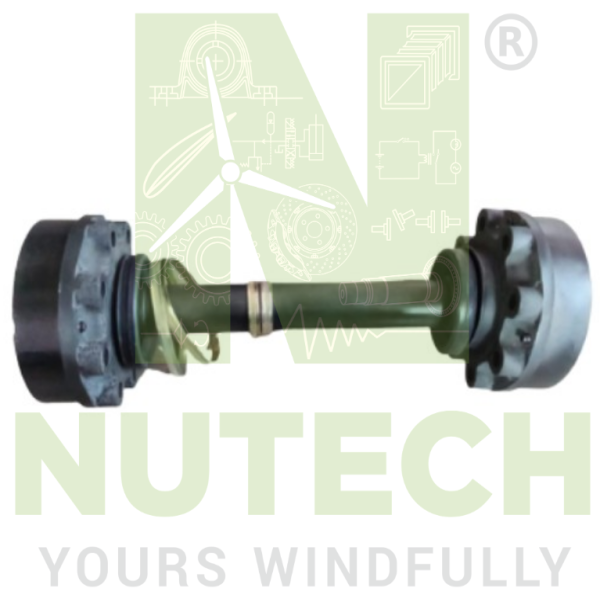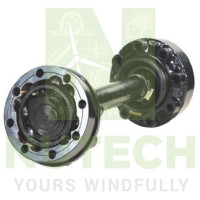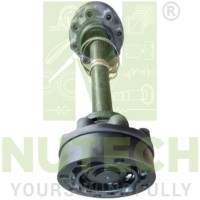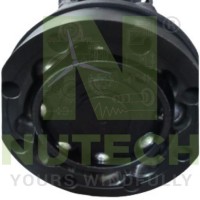CARDAN/TRANS. SHAFT VL203/42
Ask PriceItem Code: NT/V101
UOM: NOS
Lead Time: PLEASE ASK US
WTG Model: V27
WTG Capacity: 225 KW
Packing Dimension in mm:
Weight in Kg:
OEM Code: 106240
CARDAN/TRANS. SHAFT VL203/42A generator coupling is a mechanical device that connects the generator to the gearbox in a wind turbine. The coupling's job is to transmit torque from the gearbox to the generator while allowing for some misalignment between the two shafts. This misalignment can occur due to thermal expansion, vibration, or manufacturing tolerances.
There are many different types of generator couplings available, but the most common type for wind turbines is the flexible coupling. Flexible couplings use a series of elastomeric discs to absorb misalignment between the shafts. The discs are made of a material that is both flexible and strong, such as rubber or composite.
Flexible couplings are a good choice for wind turbines because they are able to withstand the harsh environmental conditions that wind turbines are exposed to. They are also relatively easy to install and maintain.
Other types of generator couplings that are sometimes used in wind turbines include:
- Rigid couplings: Rigid couplings do not allow for any misalignment between the shafts. They are typically used in smaller wind turbines where the amount of misalignment is small.
- Fluid couplings: Fluid couplings use a fluid, such as oil or water, to transmit torque from one shaft to the other. Fluid couplings are able to absorb more misalignment than flexible couplings, but they are also more complex and expensive.
The type of generator coupling that is best for a particular wind turbine will depend on a number of factors, including the size of the turbine, the amount of misalignment that is expected, and the budget.
Here are some of the benefits of using a generator coupling in a wind turbine:
- Increased efficiency: A generator coupling can help to improve the efficiency of a wind turbine by reducing the amount of vibration that is transmitted to the generator. This can lead to a decrease in power losses and an increase in the amount of energy that is produced.
- Extended lifespan: A generator coupling can help to extend the lifespan of a wind turbine by protecting the generator from damage caused by vibration. This can lead to a decrease in the number of repairs that are needed and an increase in the overall lifespan of the turbine.
- Reduced maintenance: A generator coupling can help to reduce the amount of maintenance that is needed for a wind turbine by making it easier to access and service the generator. This can lead to a decrease in the overall cost of ownership for the turbine.
Overall, a generator coupling is a valuable component in a wind turbine. It can help to improve the efficiency, lifespan, and maintenance requirements of the turbine.

